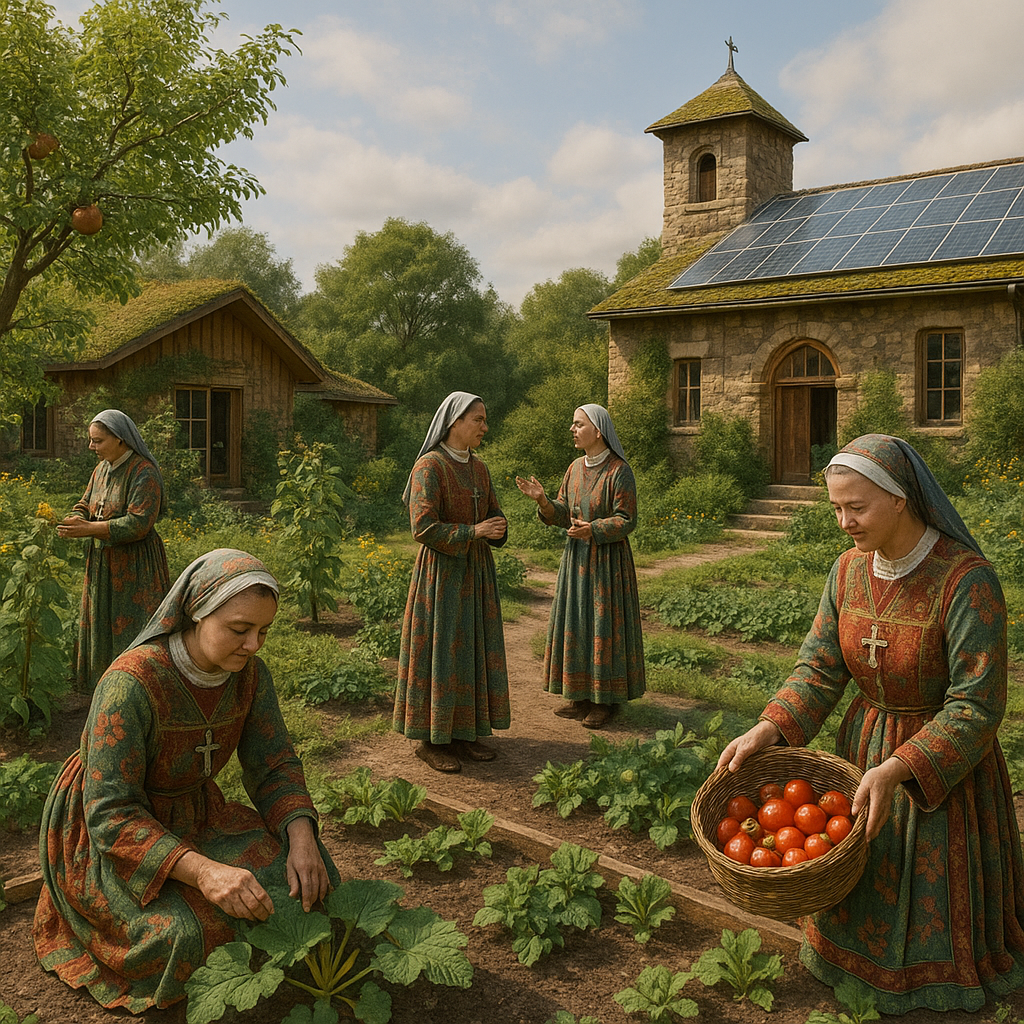Communities Living the Great Work
Green Sisters is Sarah McFarland Taylor’s rich ethnographic study of Roman Catholic nuns across North America who have committed their lives to ecological renewal. These communities draw directly on the vision of thinkers like Thomas Berry, translating his call for a shift from human-centred to Earth-centred living into everyday practice.
While The Great Work names the task of our age, Green Sisters shows what it looks like when people embody that vision. Through organic gardening, eco-friendly building, ritual, and community activism, these women are quietly shaping a new cultural paradigm rooted in reverence for the Earth.
Faith, Ecology, and Embodiment
Taylor highlights how these sisters integrate spirituality with ecological action. They draw on Catholic tradition but reinterpret it through the lens of ecology: liturgy becomes celebration of creation, vows extend to include care for the Earth, and monastic rhythms align with natural cycles.
The strength of Green Sisters is its groundedness. These are not abstract ideals but lived commitments: permaculture gardens, solar panels, seed-saving, and advocacy for environmental justice. Taylor presents them not as romanticized figures but as real women negotiating the challenges of faith, culture, and ecological crisis.
Challenging the Dominant Paradigm
The sisters’ work directly counters the extractive mindset you’ve been exploring in this series. Where the dominant paradigm sees land as resource, they see it as sacred trust. Where culture glorifies productivity, they honour seasonal rhythms of growth and rest. Where society promotes individualism, they live in intentional community.
In this way, the Green Sisters demonstrate how faith communities can resist consumer culture and create alternatives that are both spiritual and practical.
Why It Matters Now
In a time when ecological despair is widespread, the witness of these communities is quietly hopeful. They remind us that cultural transformation begins in small, embodied practices — composting, planting, praying, organizing. Their model is not grandiose, but deeply local, relational, and sustainable.
For readers of The Great Work, this book offers the next step: moving from vision to embodiment. It shows that the Great Work is not only an idea but a lived reality, sustained in the daily choices of committed communities.
Final Reflections
Green Sisters is a powerful reminder that paradigm shifts are not just intellectual but practical, woven into how we eat, build, pray, and relate. These women embody what Berry called for: a spirituality and culture that nurture the flourishing of the whole Earth community.
Placed alongside Berry, Eisenstein, Bregman, and Hopkins, Taylor’s work gives us living examples of what it means to resist “business as usual” and nurture the seeds of another world.
Journal Prompts:
- What small, embodied practices help you resist consumer culture and live in alignment with your values?
- How do you integrate spirituality with ecological awareness in your daily life?
- What can you learn from communities like the Green Sisters about living more sustainably and collectively?
If this book inspires you, explore more reflections in my Cultural Shift & Collective Purpose reviews. You might also enjoy my review of Thomas Berry’s The Great Work, which provides the visionary framework that many Green Sisters draw upon.
Stay in the loop.
Don’t want to miss a post or review? Get the monthly digest — one calm email, once a month. 👉 Keep me updated

